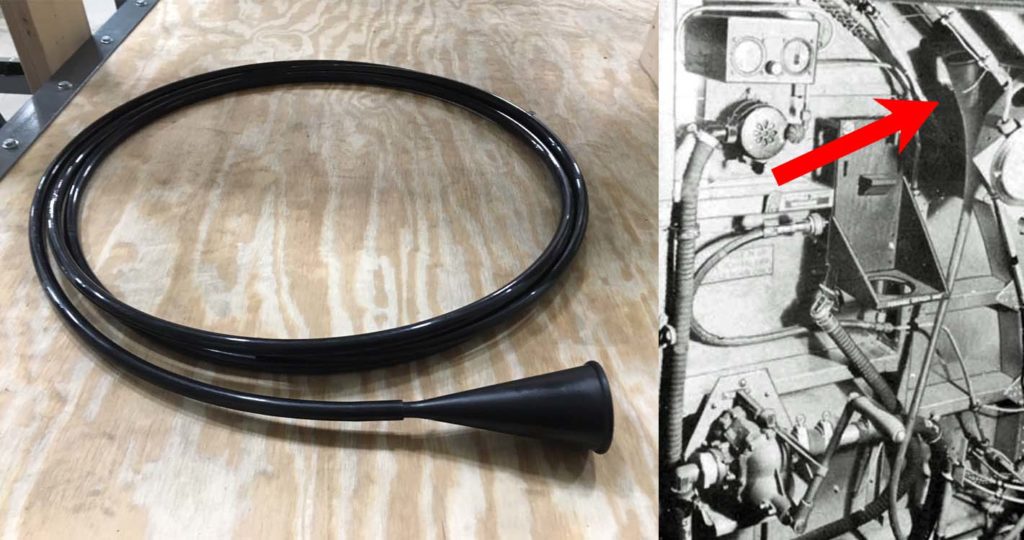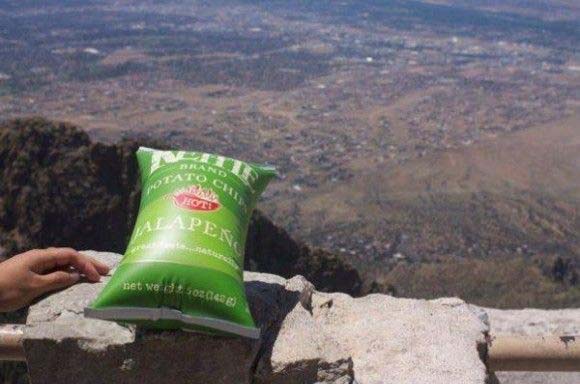
A reeanactor aboard the B-24 Joe (44-44272) pretends to use the bomber’s relief tube.
One of the questions we are most often asked is “How did airmen go to the bathroom at 30,000 ft?” Well, the answer is not easily and certainly not happily.
Aircraft of the Second World War were not far removed from today’s combat aircraft in regard to toilet facilities. The difference here was not the act of relieving one’s self, but doing so in a cold, non-pressurized environment.
You see, like most aircraft of its time, the primary relief facility on a B-17 was a simple tube located in the bombbay. When an airman needed to urinate, he had to disconnect himself from his position, attach a walkaround oxygen bottle, proceed to the bombbay, and use the funnel at the top of the tube.
This was problematic.
Former navigator Sam Halpert noted that some airmen would tie strings to their penises, as penile shrinkage in the subzero temperatures often made it impossible to use the funnel without aid. While this was a novel solution, the tube rarely got much use. The tube’s exit point was located rather close to the ball turret, who needed ample warning to face his turret away from the incoming stream. Worse was the tube’s disturbing propensity to freeze, resulting in backwash spraying urine inside the bomb-bay. Just like any other exposed liquid, urine would immediately freeze, not thawing until after descent.
Ray has been working on Lucky Thirteen‘s bomb bay as of late, with the catwalk, Station 4, and Station 5 now largely complete. And so, being the holiday season, I thought I might surprise Ray with the airplane’s relief tube. Following Boeing specifications, the tube is just under 15 feet of 1/2 inch rubber tubing (3/8 ID, 1/8 Wall, Specification ZZ-T-831), topped off with the appropriate AN-8018 horn (confirmed using an original example from the 91st Bomb Group). It made for a good laugh, but Ray was by no means surprised.

Lucky Thirteen‘s relief tube (46-8116) compared with an illustration from the manual. The funnel hangs near a portable oxygen bracket at the back of the bomb-bay.
The other dreaded apparatus was the chemical toilet.
The chemical toilet was located in the back of the airplane next to Station 7 – in fact, it was the first thing one saw when opening the airplane’s door. Little more than a dual-layered bucket, the chemical toilet was meant to use interchangeable liners to catch its contents. Any airman brave enough to use it was also responsible for cleaning it. Boeing seemingly thought of everything, the area around the toilet having a coat hook and a roll of toilet paper nearby! In fact, the lower section of Station 7 was even sprayed with asphalt varnish to control corrosion caused by the splashing of urine.

The aircraft’s Chemical Toilet located at Station 7 beside the main entry door.
Now, you may recall that the B-17 carried a pair of thermos bottles. Well, despite whatever good intentions the Army brass had in providing a steady supply of coffee to its airmen, the truth was that coffee and hot chocolate are diuretics. As such, while the contents of these thermoses helped keep airmen awake and alert, they also forced airmen to regularly leave their stations to use the dreaded relief facilities. It was for this reason that, toward the end of 1943, the Army Air Forces began issuing rations specially designed for airmen. Filled with fudge, peanuts, and fruit candies, these rations used sugar rather than coffee to keep American airmen awake.
Diet was an important part of high-altitude operations. Meals for crews going on operations were deliberately planned to be high in protein and low in fiber. In fact, Army airmen were some of the only servicemen in the world to regularly eat real eggs rather than the powdered variety. Relief facilities not withstanding, a bad case of gas could be dangerous, if not fatal. Perhaps no better illustration of this exists than to watch what happens to a bag of potato chips when brought to high altitudes without being in a pressurized environment.

This photo was taken at 10,678 feet. Now imagine if that was your stomach.
We at Hangar Thirteen realize how silly a subject like this can be. However, we encourage people to stop and think about the situations being described here. There was more to strategic bombing than combat, and problems such as these help us to better grasp the realities of high-altitude operations in the Second World War.
